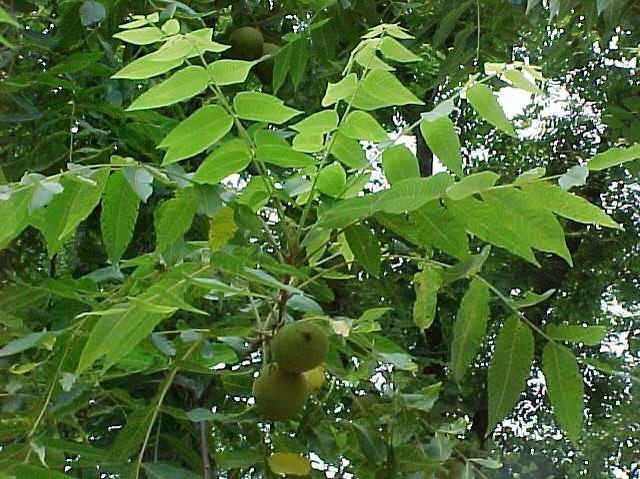Black Walnut (Juglans nigra)
$30.00
3 in stock
Share
Description
Culture
Prefers moist, organically rich, well-drained soils in full sun. Intolerant of shade. Difficult to transplant because of deep taproot. May be grown for its edible nuts. Although young trees will sometimes begin producing nuts when only 4-6 years old, it usually takes 20 years before a tree will produce a large crop of nuts.
Noteworthy Characteristics
Black walnut is a large deciduous tree typically growing 75-100’ (less frequently to 125’) tall with and an oval to rounded crown. Mature trees characteristically have long trunks, often with an absence of lower branching. Fissured, sharply ridged, dark gray-black bark forms diamond patterns. Black walnut is native from Massachusetts through southern Ontario to South Dakota south to Florida and Texas. In Missouri, it typically occurs in rich woods, in valleys along streams and in open upland woods throughout the state (Steyermark). Features odd-pinnate compound leaves (to 24” long), each with 13-23 oblong to lanceolate leaflets. Leaves are late to emerge in spring and early to drop in fall. Leaves are strongly aromatic when crushed. Fall color is an undistinguished yellow. Yellow green monoecious flowers appear in late spring (May-June), the male flowers in drooping hairy catkins and the female flowers in short terminal spikes. Female flowers give way to edible nuts, each being encased in a yellow-green husk. Nuts mature in autumn, falling to the ground where the husks blacken as they rot away. Kernels are edible but hard to extract. Black walnuts are harvested for commercial sale. The wood from this tree is highly valued for a number of commercial uses including cabinets, furniture, gunstocks and fine veneers. It is perhaps the best furniture wood available from any native American tree. Overharvesting of trees for the wood has greatly reduced the native populations in the wild. Native Americans used the nuts for food and boiled the tree sap for syrup. They also reportedly threw the husks into ponds to poison fish, making them easier to catch. Juglans comes from the Latin words jovis and glans meaning nut of Jove. Nigra means black, in reference to the dark bark and nuts.
Problems
No serious insect or disease problems. Potential diseases include anthracnose, bacterial blight, root rot, canker, leaf spot and shoot dieback. Watch for aphids, fall webworm and a variety of foliage chewing caterpillars. Black walnut roots produce chemicals called juglones which are very toxic to certain other plants such as azaleas, rhododendrons, blueberries, peonies and solanaceous crops (tomatoes, peppers, potatoes). Most of the toxicity is limited to within the drip line of the tree, but the area of toxicity typically increases outward as the tree matures. Nuts can be quite messy in fall. Husks can stain clothing and sidewalks.
Additional information
| size | 15-gallon, 3-gallon, 7-gallon |
|---|
Related products
-
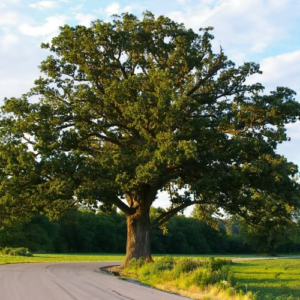
Bur Oak (Quercus macrocarpa)
$30.00 – $90.00 Select options This product has multiple variants. The options may be chosen on the product page -
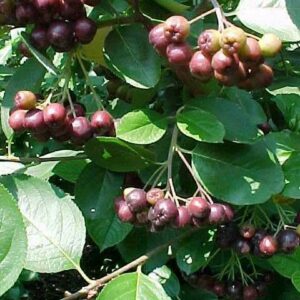
Black Chokeberry (Aronia melanocarpa)
$30.00 Out of Stock -
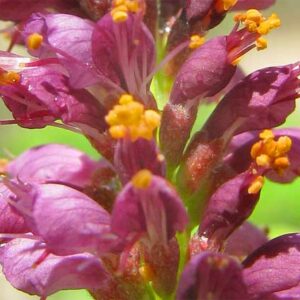
False Indigo (Amorpha fruticosa)
$30.00 – $60.00 Select options This product has multiple variants. The options may be chosen on the product page -
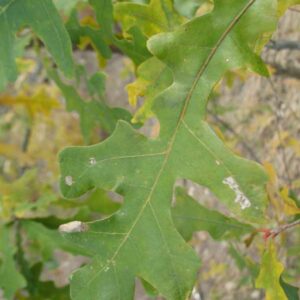
Overcup Oak (Quercus lyrata)
$30.00 – $90.00 Select options This product has multiple variants. The options may be chosen on the product page

